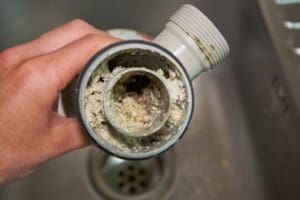The In-Depth Handbook to Managing Low Water Pressure in Your Home
The In-Depth Handbook to Managing Low Water Pressure in Your Home
Blog Article
On this page on the next paragraphs you'll find additional helpful tips in relation to Dealing with Low Water Pressure in Your Home.

Low tide stress in your home can be an aggravating trouble, affecting everything from bathing to cleaning meals. If you're experiencing weak water flow, there are numerous feasible causes and options to discover. In this overview, we'll go over common reasons for low tide pressure and practical actions to resolve the problem successfully.
Introduction to Low Water Pressure
Low tide stress occurs when the flow of water from your faucets, showers, and other fixtures is weaker than normal. This can make day-to-day jobs more challenging and less effective. Recognizing the causes of low tide pressure is vital to locating the right service.
Usual Causes of Low Tide Stress
Pipeline Obstructions
Gradually, pipes can become obstructed with mineral deposits, debris, or particles, restricting the flow of water. This is an usual issue in older homes with galvanized steel pipelines.
Rust
Deterioration within pipelines can lead to leakages and lowered water pressure. Corrosion build-up can constrict water flow, specifically in aging plumbing systems.
Faulty Pressure Regulatory Authorities
Pressure regulators are in charge of keeping consistent water stress in your home. If they malfunction, it can result in low water stress or irregular circulation throughout your home.
Community Water Issues
Often, the trouble lies outside your home. Municipal supply of water problems, such as main line leaks or maintenance work, can temporarily reduce water pressure in your area.
Exactly How to Detect Low Tide Stress
Checking Taps and Fixtures
Begin by testing the water stress at various taps and components throughout your home. If the concern is separated to specific locations, it may indicate local problems.
Checking Pipelines
Check visible pipelines for indicators of leakages, rust, or clogs. Pay attention to any type of uncommon noises, such as knocking or rattling pipes, which could indicate concerns within the plumbing system.
Consulting with a Plumber
If you're not able to determine the reason for low water pressure, consider hiring an expert plumber to carry out an extensive inspection. They can identify underlying problems and advise ideal remedies.
Do It Yourself Solutions to Fix Low Tide Pressure
Cleansing Aerators and Showerheads
Mineral deposits can collect in aerators and showerheads, reducing water flow. Eliminate and cleanse these components regularly to boost water pressure.
Flushing Hot Water Heater
Sediment build-up in the hot water heater can restrict circulation and decrease performance. Purging the container periodically assists remove sediment and keep optimum efficiency.
Examining Pressure Regulator
Make sure that the pressure regulatory authority is operating properly. Adjusting or changing the regulator can aid recover appropriate water stress throughout your home.
Clearing Up Clogs in Water Lines
For small obstructions, try making use of a plumbing serpent or chemical drain cleaner to clear obstructions in pipes. Be cautious when making use of chemicals and comply with security standards.
When to Call an Expert Plumber
If do it yourself initiatives fall short to resolve the problem or if you believe significant plumbing issues, it's ideal to look for assistance from a certified plumber. They have the expertise and devices to deal with complicated issues securely and effectively.
Safety Nets to Keep Water Pressure
Routine Maintenance
Set up routine maintenance for your plumbing system to stop concerns such as rust, leakages, and obstructions. Resolving minor troubles early can help prevent even more significant repairs later on.
Mounting a Stress Booster
Take into consideration setting up a pressure booster pump to enhance water stress in areas with consistently low flow. This can be specifically valuable for multi-story homes or residential properties with high-demand components.
Tracking Water Use
Bear in mind water usage routines and stay clear of ill-using the plumbing system. Easy changes, such as astonishing showers and washing loads, can help maintain ample water stress.
Verdict
Managing low water pressure can be aggravating, but determining the underlying causes and implementing ideal options can restore ideal flow throughout your home. Whether it's cleaning up aerators, checking pipelines, or speaking with a plumber, taking aggressive steps can ensure a consistent supply of water for your day-to-day needs.
FOUR WAYS TO FIX LOW WATER PRESSURE NOW
Turning on a shower or faucet only to find the water comes out in a sad, slow drizzle is never a good feeling. How exactly are you supposed to wash a pan or take a quick shower when it takes 10 minutes just to rinse off a little soap? The good news is that when your water pressure is bad, there's always a cause: typically one that can be easily fixed. Here are some of the most common causes of low pressure and what you can do to fix the issue:
DEBRIS AND MINERAL DEPOSIT BUILDUPS
If you notice low water pressure from just one or two of the fixtures in your house, the problem likely has to do with debris buildup. Water is full of minerals and other debris, all of which can accumulate in your pipes and on your fixtures. This can cause a blockage that affects how much water flows through. To fix this, try filling a small plastic bag with white vinegar, and use a rubber band to hang it around your showerhead or faucet. Let the head of the fixture soak for a few hours, and the vinegar should loosen the deposits.
WATER LEAKS
Leaks are another common cause of low water pressure. If water is flowing out of your plumbing through a hole or crack before it can reach your fixture, the pressure coming out of the faucet or showerhead will be lower. A plumbing professional is your best bet for finding and repairing a leak in your water supply pipes.
Leaks are another common cause of low water pressure. If water is flowing out of your plumbing through a hole or crack before it can reach your fixture, the pressure coming out of the faucet or showerhead will be lower. A plumbing professional is your best bet for finding and repairing a leak in your water supply pipes.
FOUR WAYS TO FIX LOW WATER PRESSURE NOW
Turning on a shower or faucet only to find the water comes out in a sad, slow drizzle is never a good feeling. How exactly are you supposed to wash a pan or take a quick shower when it takes 10 minutes just to rinse off a little soap? The good news is that when your water pressure is bad, there's always a cause: typically one that can be easily fixed. Here are some of the most common causes of low pressure and what you can do to fix the issue:
DEBRIS AND MINERAL DEPOSIT BUILDUPS
If you notice low water pressure from just one or two of the fixtures in your house, the problem likely has to do with debris buildup. Water is full of minerals and other debris, all of which can accumulate in your pipes and on your fixtures. This can cause a blockage that affects how much water flows through. To fix this, try filling a small plastic bag with white vinegar, and use a rubber band to hang it around your showerhead or faucet. Let the head of the fixture soak for a few hours, and the vinegar should loosen the deposits.
WATER LEAKS
Leaks are another common cause of low water pressure. If water is flowing out of your plumbing through a hole or crack before it can reach your fixture, the pressure coming out of the faucet or showerhead will be lower. A plumbing professional is your best bet for finding and repairing a leak in your water supply pipes.
Leaks are another common cause of low water pressure. If water is flowing out of your plumbing through a hole or crack before it can reach your fixture, the pressure coming out of the faucet or showerhead will be lower. A plumbing professional is your best bet for finding and repairing a leak in your water supply pipes.
A VALVE ISSUE
If you have low water pressure throughout your home, check your main shut-off valve to make sure it's completely open. You may also want to see if there's a pressure-reducing valve installed. If there is, have a plumber help you adjust the settings to get the pressure you're looking for.
OTHERS USING WATER
Believe it or not, your low water pressure could be caused by your neighbors. If you notice low pressure at certain times of day, it may be because you and the people living next to you have similar schedules - when everyone is showering at the same time, the pressure will be lower in every home. Low pressure throughout the neighborhood may also be caused by an issue with your municipal water supply. If that's the case, call the supplier to see if they're working on the issue.
https://www.rotorooter.com/blog/water-leaking/low-water-pressure-fixes/

Do you enjoy reading up on 10 Reasons for Low Water Pressure in Your House? Try leaving feedback further down. We would be happy to hear your insights about this page. Hoping to see you back again in the future. Loved our blog posting? Please quickly share it. Help other people locate it. I praise you for being here. Come back soon.
Click Here Report this page